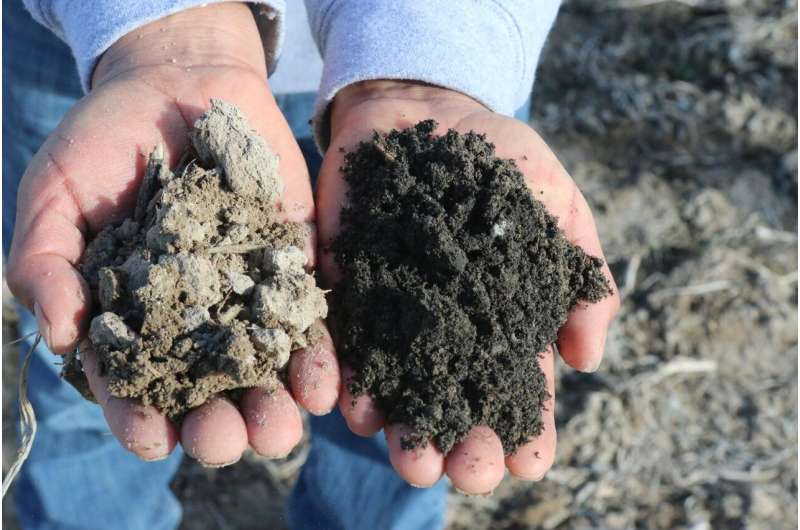Char application restores soil carbon and productivity

Intensively tilled soils have lost up to 50% of their original C with the attendant degradation in soil properties and productivity. Restoring the C lost with current conservation practices (i.e., no-till, cover crops) often takes decades. Applying high-C coal combustion residue from sugar beet (Beta vulgaris L.) processing factories, known as char, may rapidly restore soil C and productivity in degraded croplands.
In a recent Journal of Environmental Quality article, researchers in the Nebraska High Plains evaluated soil and crop response to char containing about 30% C applied at different rates ranging from 0 to 67.3 Mg ha-1 to two relatively low C soils (< 1.1% C) and one relatively high C soil (1.7% C). After 2 years, char application, particularly at the highest rate, increased soil C, sulfate, Ca, Mg, and Na concentrations in all soils but did not affect soil physical properties nor crop yields.
Findings suggest that this industrial by-product can be a potential strategy to rapidly restore C in degraded agricultural soils, but additional long-term (> 2 years) research with char application exceeding 67.3 Mg ha-1 under different soils and climates is needed to fully understand how char impacts soil properties and crop yields.
More information: Humberto Blanco‐Canqui et al, Can char carbon enhance soil properties and crop yields in low‐carbon soils?, Journal of Environmental Quality (2020). DOI: 10.1002/jeq2.20111
Journal information: Journal of Environmental Quality
Provided by American Society of Agronomy





















